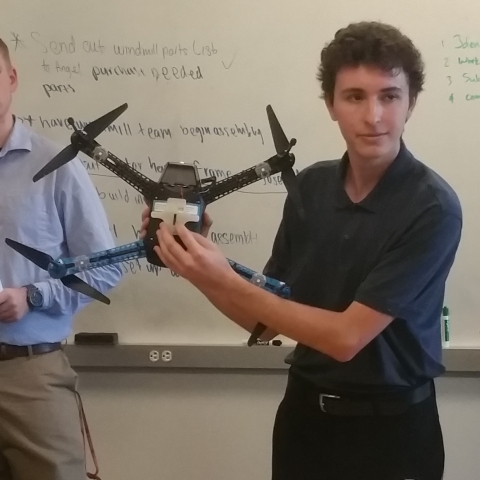Every new UAV team needs people to be trained to manually fly the UAV drone. The UAV is supposed to be autonomous. However that does not mean it doesn't need someone who knows how to drive it. One example is in emergency situtations. So team members Alexander Li, Austin Stratton, and Duncan Klug volunteered to go first. They were to meet with members of the Mechatronics, Embedded Systems and Automation Laboratory (MESA Lab) at the Castle Air Base. After meeting with Tiebiao and other members of the MESA lab, the three began their training.

The first day of training focused more on showing important aspects of the UAV such as: calibrating the UAV's autonomous flight, and basic manual control. The UAV has many components--both hardware and software--that the driver needs to be familiar with. A few examples of hardware that make up the UAV are the autopilot system, electronic speed control, and GPS. Even parts like the batteries require the driver to know the safety procedures. The team had to watch a small presentation about the LiPo batteries the UAV used and the proper charging procedures. Learning to use the software that drives the UAV was another crucial part of the training. The UAV uses a software called Mission Planner. So the drivers were shown how to calibrate the UAV with Mission Planner. First they were shown how to load the firmware into the drone and then calibrate the drone to fly under certain parameters. The team was then shown an initial test flight using mission planner and learning the basic operation of the UAV and its basic flight modes.
So the initial training required a lot more absorbing information rather than hands-on learning, and for good reason. There is a lot of important information the driver must know before going straight into flying the UAV drone by him or herself. The next days will have more hands-on training involved with experienced users ready to fly.

